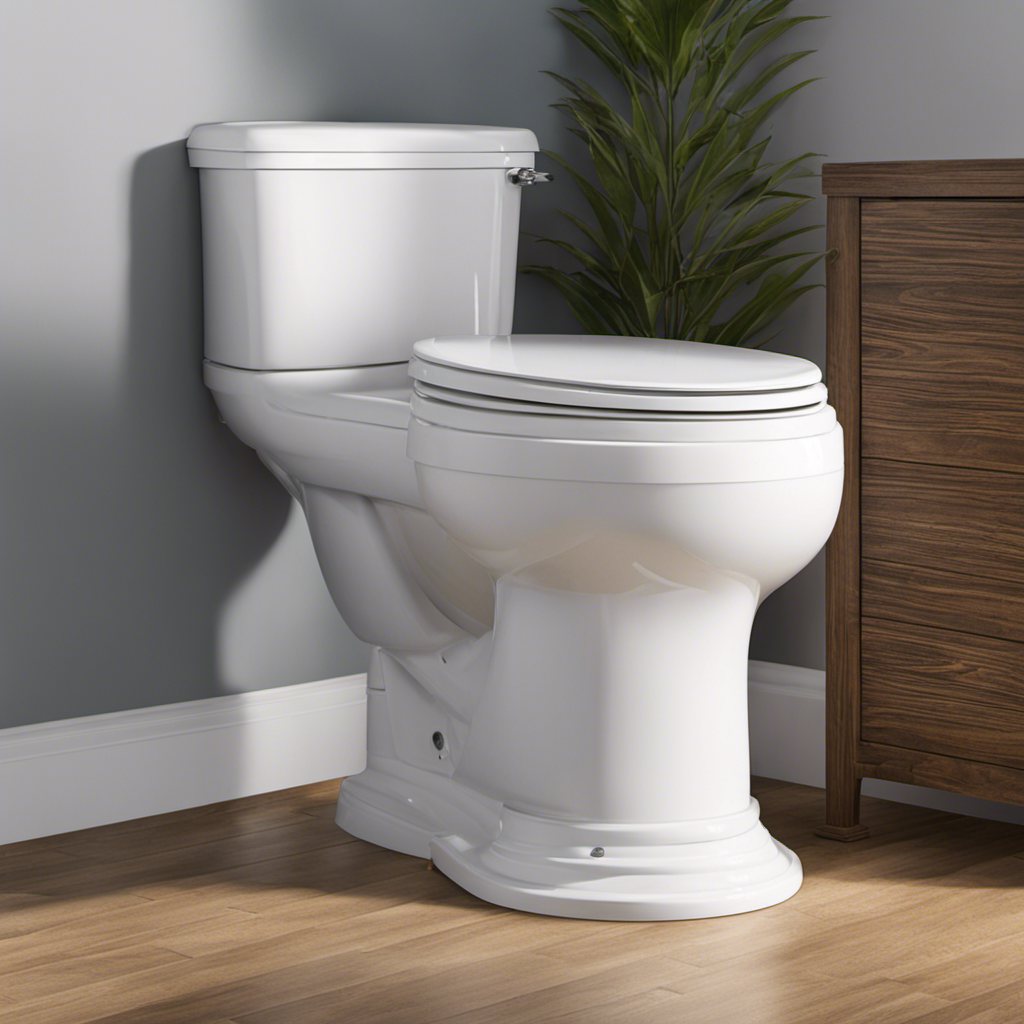I’ve had my fair share of plumbing issues, but one of the most frustrating problems to deal with is a leaking toilet. It’s not always easy to spot, and the longer it goes unnoticed, the more damage it can cause.
That’s why it’s important to know the common signs and how to check for leaks. In this article, I’ll guide you through the steps to identify and fix a leaking toilet, saving you from potential headaches and costly repairs.
Key Takeaways
- Signs of a toilet leak include water pooling around the base, cracked tank or bowl, faulty fill valve or flapper, and loose connections in the water supply line.
- To check for water leaks around the toilet base, inspect the toilet flange for cracks or damage, examine the toilet wax ring for wear or deterioration, and tighten any loose toilet bolts carefully.
- Hidden toilet tank leaks can be identified by a constantly running toilet, wetness around the base, and an unexplained increase in water bill. Check and replace the flapper valve if necessary, and inspect and tighten any loose connections in the water supply line.
- It is important to regularly inspect and maintain the toilet, check and replace the flapper or fill valve if worn or damaged, and tighten all connections to prevent toilet leaks and avoid water damage and wasted resources.
Common Signs of a Toilet Leak
One of the most common signs of a toilet leak is water pooling around the base of the toilet. This can indicate that there is a problem with the seal between the toilet and the floor, causing water to leak out.
Other potential causes of toilet leaks include a cracked tank or bowl, a faulty fill valve or flapper, or loose connections in the water supply line.
It is important to address these issues promptly to prevent further damage and potential water waste.
Signs of water damage from a toilet leak can include discolored or warped flooring, a musty odor, or the presence of mold or mildew.
If you notice any of these signs, it is recommended to consult a professional plumber to diagnose and repair the leak.
How to Check for Water Leaks Around the Toilet Base
To check for water leaks around the toilet base, you can simply feel around the floor for any dampness or wetness. If you suspect a leak, it’s important to act quickly to prevent further damage. Here are some steps to help you identify and address the issue:
-
Inspect the toilet flange: Check for any cracks or damage to the flange, which is the pipe fitting that connects the toilet to the floor. A damaged flange can cause leaks.
-
Examine the toilet wax ring: The wax ring is located between the toilet base and the flange. Look for any signs of wear or deterioration. A worn-out wax ring can lead to leaks.
-
Tighten the toilet bolts: If you notice any loose bolts securing the toilet to the floor, tighten them carefully. Loose bolts can cause water to seep out.
-
Seek professional help: If you’re unsure or unable to fix the issue yourself, it’s best to consult a plumber who can assess and repair any leaks professionally.
Identifying a Hidden Toilet Tank Leak
If you suspect a hidden toilet tank leak, it’s essential to act promptly to prevent further damage. Regular toilet tank maintenance is crucial for preventing toilet leaks and ensuring the proper functioning of your toilet. Here are some key steps to identify and address hidden toilet tank leaks:
| Signs of a Hidden Toilet Tank Leak | What to Do |
|---|---|
| Constantly running toilet | Check the flapper valve and replace if necessary |
| Wetness around the base of the toilet | Inspect the water supply line and tighten any loose connections |
| Unexplained increase in water bill | Conduct a dye test to detect any leaks in the toilet tank |
Understanding the Importance of Toilet Flapper Inspection
By regularly inspecting your toilet flapper, you can prevent potential leaks and ensure the proper functioning of your toilet. Proper toilet flapper maintenance is essential to avoid water wastage and costly repairs. Here are some important points to consider when troubleshooting toilet flapper issues:
-
Check for wear and tear: Over time, the flapper can become worn or damaged, leading to leaks. Inspect it for any signs of cracks or deterioration.
-
Test for a proper seal: A faulty flapper may not create a tight seal, causing water to continuously flow into the bowl. Conduct a dye test to check for any leaks.
-
Clean the flapper and surrounding area: Debris and mineral deposits can accumulate, affecting the flapper’s performance. Regular cleaning helps maintain its efficiency.
-
Replace if necessary: If you notice any significant issues or the flapper is beyond repair, it’s important to replace it promptly to avoid further complications.
Taking these steps will ensure that your toilet flapper functions optimally, preventing leaks and saving water.
Steps to Fix a Leaking Toilet at Home
Regularly inspecting and maintaining your toilet can help prevent leaks and costly repairs.
Toilet leak prevention is crucial to avoid water damage and wasted resources. The most common causes of toilet leaks are worn-out flappers, faulty fill valves, and loose connections.
To prevent leaks, start by checking the flapper. Ensure it is properly aligned and in good condition. If it’s worn or damaged, replace it immediately.
Next, examine the fill valve for any signs of wear or malfunction. If necessary, replace it to ensure a proper seal.
Additionally, check all the connections, such as the supply line and tank bolts, to make sure they are tight and secure.
Regularly inspecting these components and addressing any issues promptly can help prevent toilet leaks and save you from costly repairs in the long run.
Conclusion
In conclusion, it’s important to be proactive in checking for toilet leaks to prevent water damage and save on utility bills.
According to a study conducted by the Environmental Protection Agency, a leaking toilet can waste up to 200 gallons of water per day.
By regularly inspecting the toilet base, checking for hidden tank leaks, and inspecting the toilet flapper, you can identify and fix leaks promptly.
Remember, a small leak today can quickly become a big problem tomorrow.
Stay vigilant and take action to ensure your toilet is leak-free.










